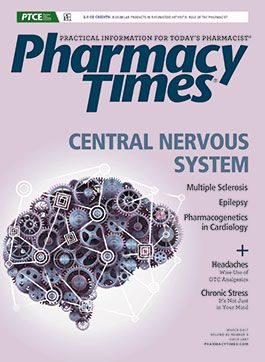Publication
Article
Pharmacy Times
Stelara
Author(s):
The FDA has approved Stelara injection for the treatment of adults with moderately to severely active Crohn’s disease who have failed, or were intolerant to, treatment with immunomodulators or corticosteroids.
The FDA has approved Stelara (ustekinumab, by Janssen Biotech, Inc) injection for the treatment of adults with moderately to severely active Crohn’s disease (CD) who have failed, or were intolerant to, treatment with immunomodulators or corticosteroids but never failed treatment with a tumor necrosis factor (TNF) blocker, or who failed, or were intolerant to, treatment with 1 or more TNF blockers.1,2 Stelara was previously approved for the treatment of plaque psoriasis or active psoriatic arthritis.1 An estimated 700,000 Americans are affected by CD. Stelara is the first biologic treatment for CD that targets interleukin (IL)-12 and IL-23 cytokines.2
Pharmacology and Pharmacokinetics
Stelara is a human interleukin-12 and -23 antagonist. It binds with specificity to the protein subunit used by both the IL-12 and IL-23 cytokines. IL-12 and IL-23 naturally occur, are involved in inflammatory and immune responses, and contribute to the chronic inflammation of CD. In in vitro models, Stelara disrupted IL-12 and IL-23 mediated signaling and cytokine cascades.
In CD trials, steady-state plasma concentration of Stelara was achieved by the start of the second maintenance dose. The estimated median terminal half-life is approximately 19 days.1
Dosage and Administration
Treatment of CD with Stelara begins with a 1-time, weight-based intravenous infusion induction dose to reduce symptoms, which is followed by maintenance subcutaneous doses every 8 weeks to continue symptom control. Although the intravenous induction dose should be administered by a health care professional, subcutaneous injections may be administered by a health care professional or the patient. The induction dose is 260 mg for patients weighing up to 55 kg, 390 mg for patients weighing more than 55 kg to 85 kg, and 520 mg for patients weighing more than 85 kg. The maintenance dose is 90 mg subcutaneously every 8 weeks, beginning 8 weeks after the induction dose.1,2
Clinical Trials
Three randomized, double-blind, placebo-controlled clinical studies evaluated Stelara in adult patients with moderately to severely active CD. Two of these studies lasted 8 weeks and evaluated the 1-time intravenous induction dose. These studies found that more patients experienced CD symptom relief at 6 weeks than patients using placebo, with some Stelara patients reporting improvement at 3 weeks. The third study lasted 44 weeks and evaluated the subcutaneous maintenance dose. At the study’s end, most patients who had responded to the induction dose and also received the Stelara maintenance dose achieved clinical remission.1,2
Contraindications, Warnings, and Precautions
Stelara is contraindicated in patients with clinically significant hypersensitivity to any of its components.
Serious bacterial, fungal, and viral infections have occurred during treatment with Stelara. Treatment with Stelara should not be initiated during a clinically significant active infection. If an infection develops, discontinuation of the medication should be considered. Patients who are genetically deficient in IL-12/IL-23 are particularly vulnerable to disseminated infections due to mycobacteria, salmonella, and Bacillus Calmette-Guerin vaccinations. Tuberculosis status should be evaluated prior to beginning treatment with Stelara, as patients with active tuberculosis should not receive Stelara, and latent tuberculosis should be treated prior to initiation of treatment with Stelara. Stelara may increase the risk for malignancies. Hypersensitivity reactions, such as anaphylaxis and angioedema, may occur. One case of reversible posterior leukoencephalopathy syndrome has been reported in clinical studies of Stelara for the treatment of psoriasis and psoriatic arthritis. No cases have been reported in patients using Stelara for CD.
In patients with CD, the most common adverse effect (incidence ≥3%) with the induction dose was vomiting. The most common adverse effects with the maintenance dose (incidence ≥3%) were nasopharyngitis, injection site erythema, vulvovaginal candidiasis/mycotic infection, bronchitis, pruritus, urinary tract infection, and sinusitis.1
Dr. Holmberg earned her PharmD from the University of Connecticut and completed an ambulatory care residency at the Phoenix VA Healthcare System. Her practice has also included pediatrics and inpatient mental health. She resides in Phoenix, Arizona.
References
- Stelara [prescribing information]. Horsham, PA: Janssen Biotech Inc; 2012. stelarainfo.com/pdf/prescribinginformation.pdf. Accessed February 2017.
- FDA approves Stelara (ustekinumab) for treatment of adults with moderately to severely active Crohn’s Disease [news release]. Horsham, PA; Janssen Biotech Inc; September 26, 2016. stelarainfo.com/sites/www.stelarainfo.com/files/pressrelease.pdf. Accessed February 2017.







